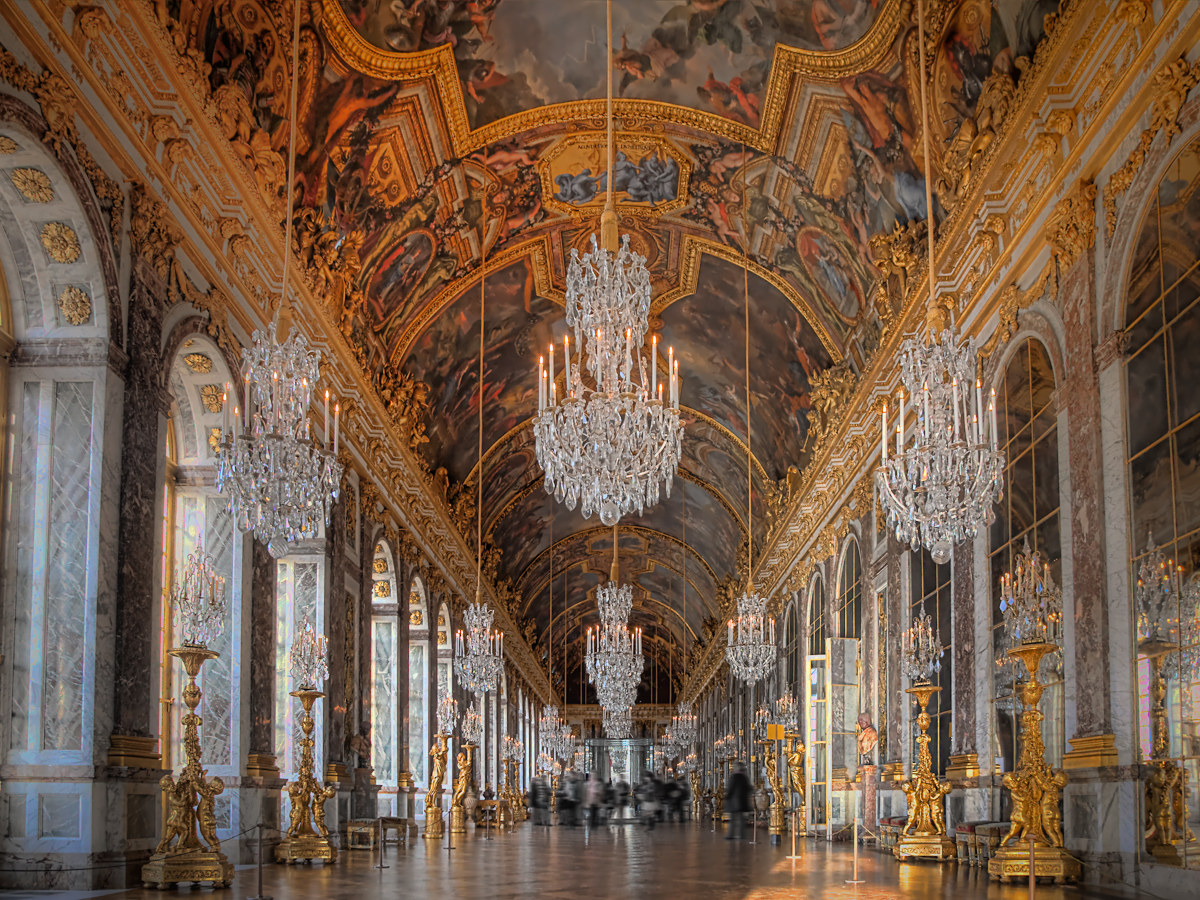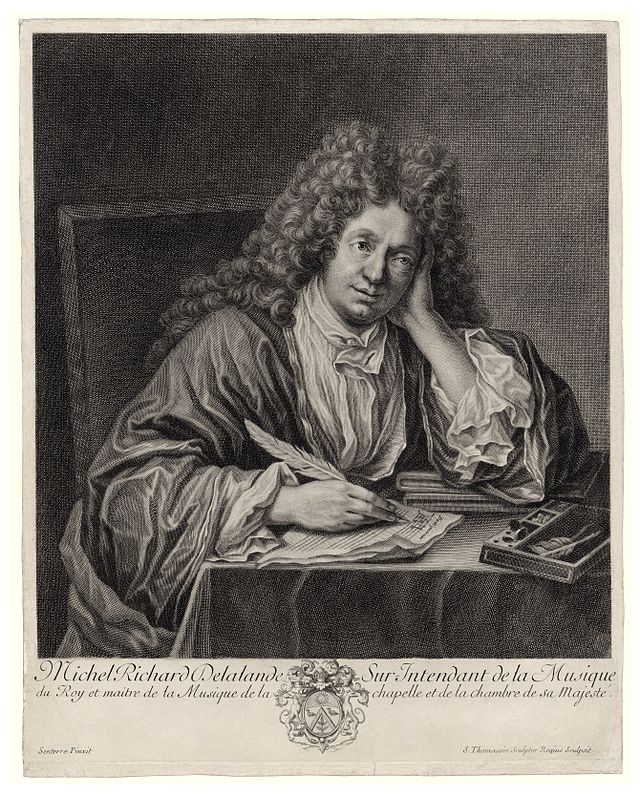 From the elegant court of Louis XIV, the “Sun King,” the California Bach Society presents glorious music by three of the greatest composers of the French baroque. Performances are scheduled for 8:00 p.m., Friday, October 17, at St. Mark’s Lutheran Church in San Francisco; 8:00 p.m., Saturday, October 18, at All Saints’ Episcopal Church in Palo Alto; and 4:00 p.m., Sunday, October 19, at First Congregational Church in Berkeley. Featured soloists will be soprano Jennifer Paulino, mezzo soprano Christina Schiffner Santschi, tenors Brian Staufenbiel and Mark Bonney, and baritone Sepp Hammer. The orchestra will feature many distinguished Bay Area musicians.
From the elegant court of Louis XIV, the “Sun King,” the California Bach Society presents glorious music by three of the greatest composers of the French baroque. Performances are scheduled for 8:00 p.m., Friday, October 17, at St. Mark’s Lutheran Church in San Francisco; 8:00 p.m., Saturday, October 18, at All Saints’ Episcopal Church in Palo Alto; and 4:00 p.m., Sunday, October 19, at First Congregational Church in Berkeley. Featured soloists will be soprano Jennifer Paulino, mezzo soprano Christina Schiffner Santschi, tenors Brian Staufenbiel and Mark Bonney, and baritone Sepp Hammer. The orchestra will feature many distinguished Bay Area musicians.
Henri Du Mont and Michel Richard Delalande each served as director of music at the Royal Chapel in Versailles. Du Mont’s richly textured Magnificat features soloists, chorus, and a small orchestra. Delalande’s lively setting of Psalm 98, Cantate Domino canticum novum, for chorus and orchestra, is one of over seventy motets he composed for the Royal Chapel. Most famous of the three, Marc-Antoine Charpentier was active at the Royal Chapel in Paris, and served Louis’ son, the Grand Dauphin. His beautiful Messe des morts from the mid-1690s, with its sepulchral scoring of strings and flutes and serenely imitative polyphony, is one of his most affecting works.
Henri Du Mont (1610–1684) was originally known as Henry de Their; this Franco-Flemish composer changed his name when he moved to Paris to become the organist at the important parish church of Saint-Paul. With the exception of a few songs and instrumental pieces, he was a composer of religious music. His illustrious successors were Jean-Baptiste Lully and François Couperin. Du Mont’s grands motets for the Chapelle Royale are the first representatives of the genre. The musical texture of each verse setting varies strikingly, in order to maximize contrast; this can also be seen in the deployment of the performing forces: soloists, groups of soloists, petite choeur, grand choeur, and orchestra all enter, leave, initiate dialogues, and recombine, the solo voices melding back into the choir. His Magnificat is a fine example of this style.
 According to tradition, Louis XIV organized a contest between composers, giving them the same sacred text, and a set amount of time to compose the musical setting. He alone was the judge. Michel-Richard Delalande (1657–1726) was one of four winners assigned to compose sacred music for each quarter of the year; his was the most important quarter of the year because of the Christmas holiday. Delalande was a distinguished composer of French grands motets, a type of sacred work that was especially pleasing to Louis because of its pomp and grandeur, written for soloists, choir and comparatively large orchestra. Delalande’s grand motet Cantate Dominum is a splendid example of this genre. The entire setting is elegant, witty, and light hearted (not characteristics one would normally associate with a sacred piece, yet completely consistent with the joyful nature of the Psalm text). The choral movements are crisp and agile, and the solos are colorful and replete with tone painting. This motet is also notable for its extensive use of the haute contre as one of the solo voices—a very high tenor (yet not a countertenor) unique to French baroque vocal music.
According to tradition, Louis XIV organized a contest between composers, giving them the same sacred text, and a set amount of time to compose the musical setting. He alone was the judge. Michel-Richard Delalande (1657–1726) was one of four winners assigned to compose sacred music for each quarter of the year; his was the most important quarter of the year because of the Christmas holiday. Delalande was a distinguished composer of French grands motets, a type of sacred work that was especially pleasing to Louis because of its pomp and grandeur, written for soloists, choir and comparatively large orchestra. Delalande’s grand motet Cantate Dominum is a splendid example of this genre. The entire setting is elegant, witty, and light hearted (not characteristics one would normally associate with a sacred piece, yet completely consistent with the joyful nature of the Psalm text). The choral movements are crisp and agile, and the solos are colorful and replete with tone painting. This motet is also notable for its extensive use of the haute contre as one of the solo voices—a very high tenor (yet not a countertenor) unique to French baroque vocal music.
Marc-Antoine Charpentier (1643–1704) was born in or near Paris. He spent “two or three years” in Rome, and studied with Giacomo Carissimi, whose strong influence can be heard in many of his musical gestures. In his Messe des morts à 4 voix et symphonie (H.10), the orchestra occupies an important position, whether introducing or accompanying the vocal parts. The Dies irae movement is notable for the diversity of its textures and for its imaginative word-painting. With the exception of the vigorous setting of Tuba mirum, the overall affect of this requiem is serenity, not drama.
Louis XIV was fortunate in his timing: many extraordinary individuals, representing all of the arts, were his contemporaries (and subjects), and he knew how to cultivate them. He was the protector of writers, notably Molière and Jean Racine, whom he ordered to sing his praises, and he imposed his own visions of beauty and nature on artists. Little remains of his splendid palaces at Saint-Germain and Marly, but Versailles—cursed as extravagant even as it was under construction and accused of having ruined the nation—still stands.
Although all European composers were strongly influenced at their roots by the Italian baroque masters, these three composers each transformed that sensibility into something uniquely French—lighter textured than the Italian, less sober and devotional than the German. And, while acknowledging the individual integrity of each composer’s musical imagination, there is no doubt that the aesthetic influence of the Versailles court contributed to this happy result.
SFEMS members receive a $5 discount on advance purchase when using promotion code “SFEMS” at www.calbach.org/tickets.pl. Season subscriptions and single tickets can be purchased by phone at 650-485-1097 or online at www.calbach.org/tickets.pl.
Performances are Friday, October 17, 8:00 p.m., at St. Mark’s Lutheran Church, 1111 O’ Farrell St. (at Franklin), San Francisco; Saturday, October 18, 8:00 p.m., at All Saints’ Episcopal Church, 555 Waverley (at Hamilton), Palo Alto; and Sunday, October 19, 4:00 p.m., at First Congregational Church, 2345 Channing Way (at Dana), Berkeley. Doors open 30 minutes prior to each performance. Advance purchase tickets are General Admission $28; Senior $20; and Under 30/Student $10. Tickets purchased at the door are General $33; Senior $24; Under 30/Student $10. For information, email info@calbach.org, visit www.calbach.org, or phone 650-485-1097.












